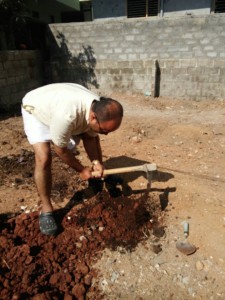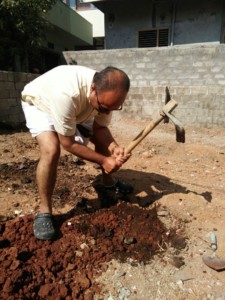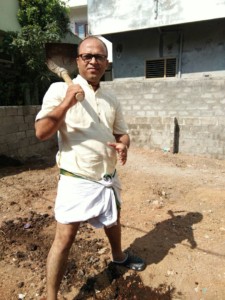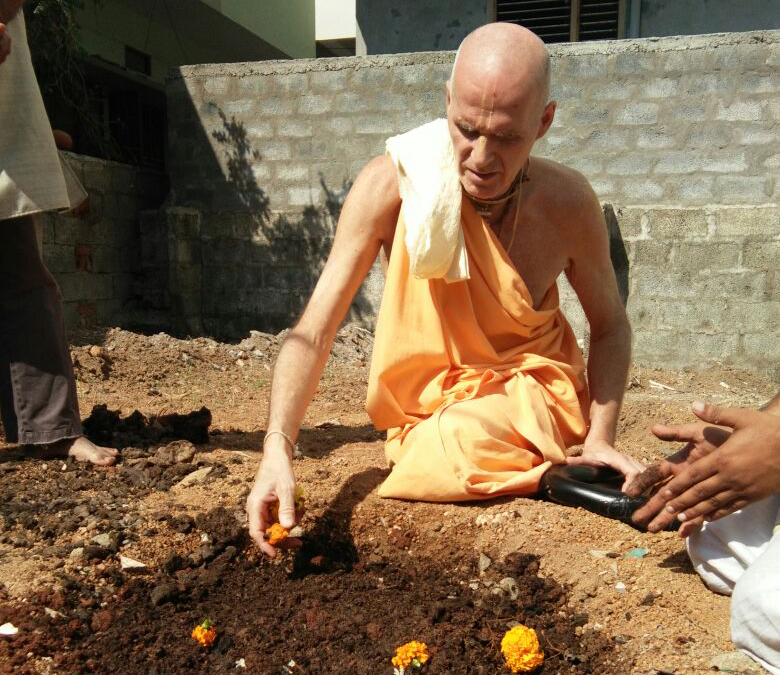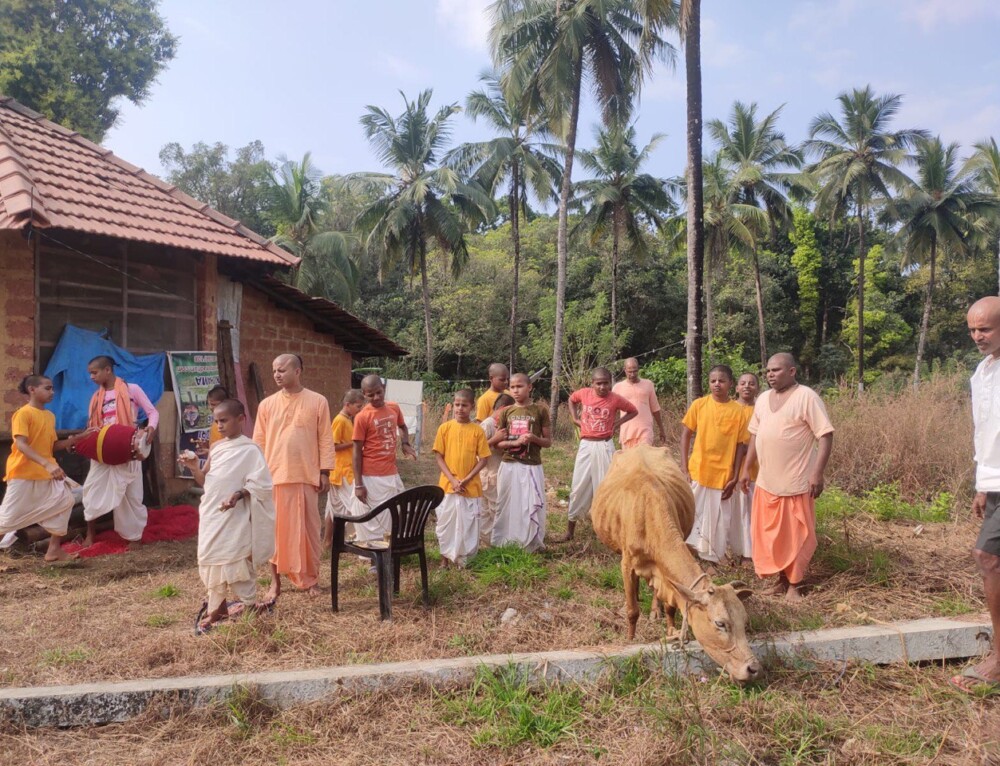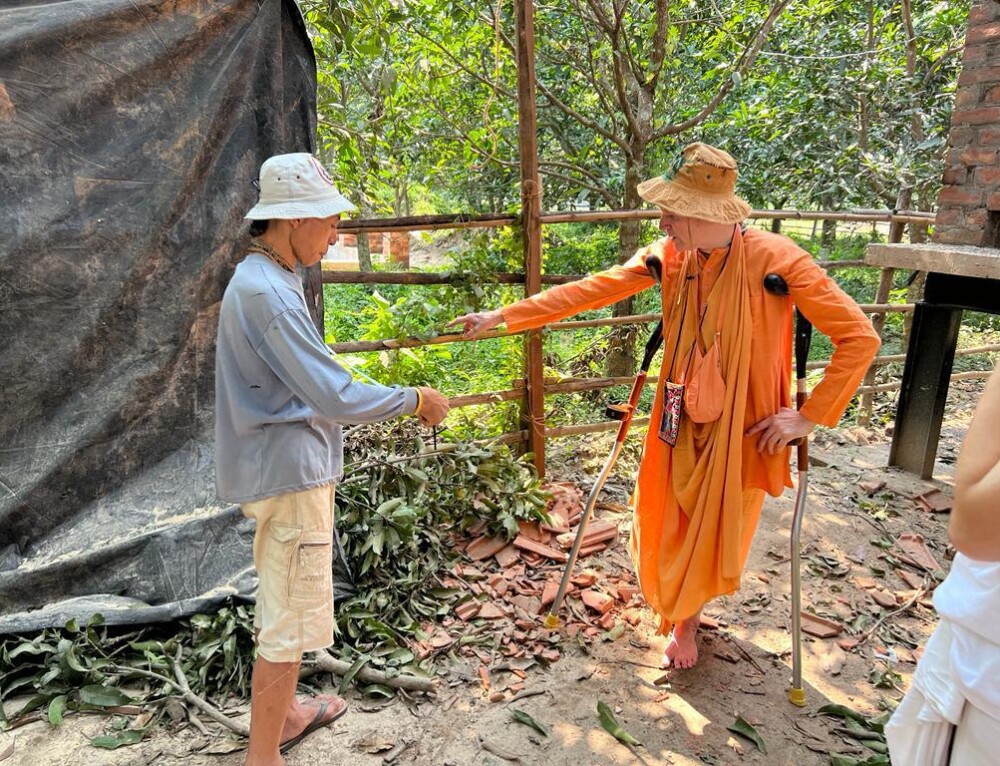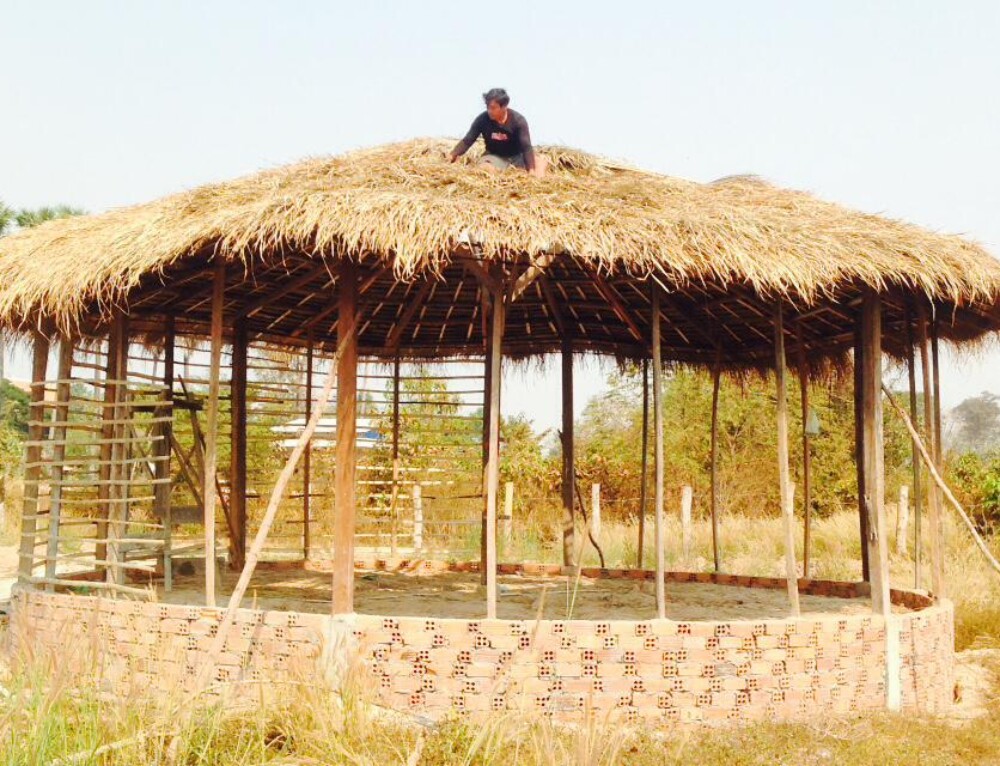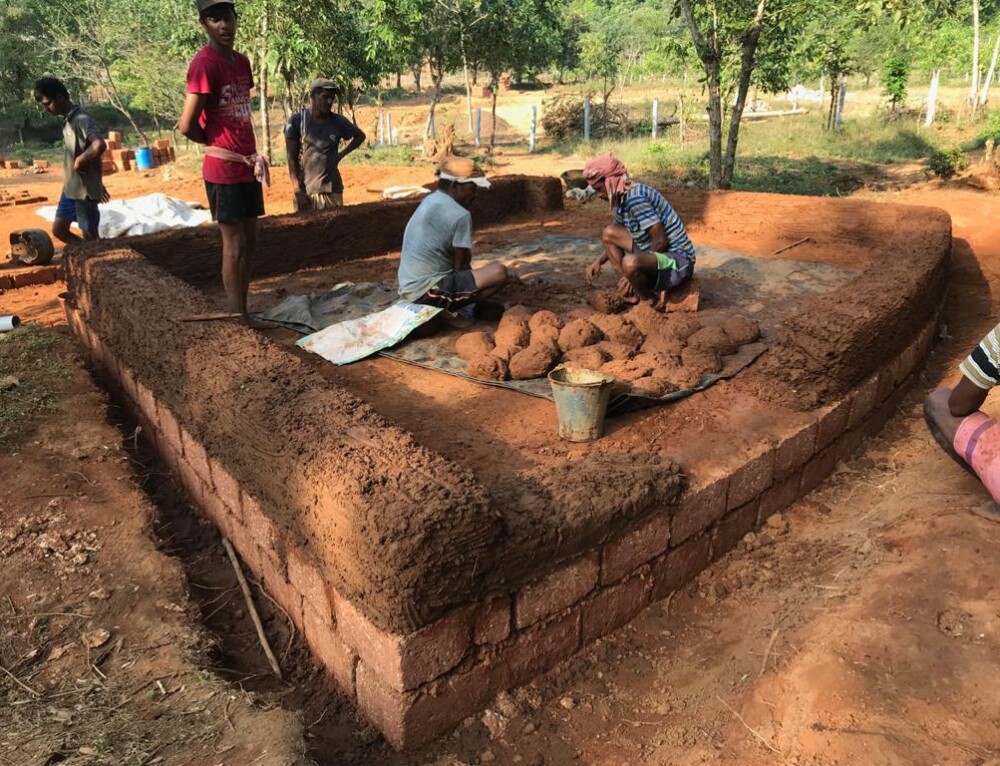By: HG Vrndavanlila Devi Dasi
“Everyone was sitting in the terminal where Srila Prabhupada was speaking. I walked up to Srila Prabhupada with the big bunch of strawberry bananas. Srila Prabhupada’s eyes opened very wide and said, “These are our bananas?” I said, “Yes Srila Prabhupada I have grown these bananas for you.” He immediately took one and ate it and said, “These are very good and now pass them out to everyone.””
As we read these memories shared by Sanka prabhu about his experiences with Srila Prabhupada, unconsciously our lips spread into a smile seeing his divine grace happy. Would we not like to give a similar happiness to him?
Sanka prabhu shares another exchange in the same breath:
“Srila Prabhupada turned around and yelled, “Sanka come here!” I ran down to where he was and he mentioned that he wanted me to plant trees on both sides of the road. Immediately after breakfast, Jayapataka and the Bengali devotees started digging up small coconut trees and planted them on both sides of the road, which are still standing today giving coconuts seasonally.”
There have been several recorded occasions when Srila Prabhupada instructed his disciples to plant and grow different food items for the Lord, sometimes flowers, vegetables and other times fruits according to the situation. Something similar was experienced by the devotees in Secunderabad too.
One of the aims of ISKCON is to teach and thus also lead by example “a simpler and more natural way of life.” This does not imply that immediately one has to pack up one’s luggage for a life on the farm. But definitely one can begin making preparations for that while being in the city. One step in the direction is to do urban farming. One can grow one’s own food in whatever limited way one can.
“One can cultivate a garden. Anyone who has a land – in India, at least, any poor man has a certain amount of land – can utilize that for Kṛṣṇa by growing flowers to offer Him.” [Bg. Purport 11.55]
Some time ago, Bhakti Raghava Swami Maharaja declared that he would consume only what has been grown by devotees. It sent everybody into a tizzy. A few things were being grown by them but not all the requirements could be met by them. However, seeing his firm determination sent them scurrying for solution even in the artificial set up of city. HG Satya Madhava prabhu decided to initiate the dialog with the owner of the open plot lying adjacent to Madhava Bhavan. After taking his due permission to use that plot for growing the vegetables, the work began. It was not an easy task. The land was rocky and unfit for farming. Not giving up on that, he began with the clearing of land with the unwanted stuff. Then a full load of red soil was brought. Thereafter, sack full of Mother Surabhi’s dung and compost manure (from New Govardhan) was taken to imbue the land with life.
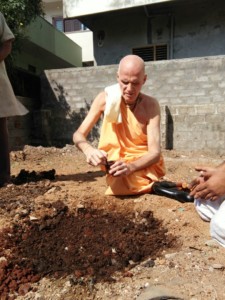
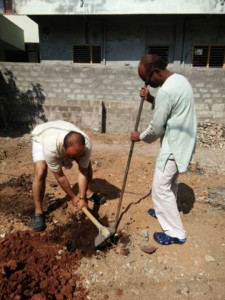
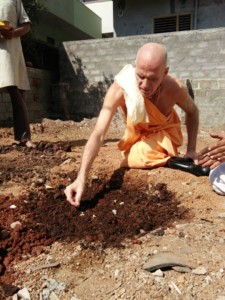
After concentrated effort from Satya Madhava prabhu and Gour Gopal prabhu finally, the land was ready to receive the seeds. The seeds of bhakti had taken the shape of the bitter gourd. The first vegetable to be planted was the bitter gourd, one of the permanent preparations for maharaja.
brhat-sama tatha samnam
gayatri chandasam aham
masanam marga-sirso ‘ham
rtunam kusumakarah [Bg 10.35]
In months, Krishna declares Himself as Margasira. This month of Margasira, which is “considered the best of all months because in India grains are collected from the fields at this time, and the people become very happy” [cf. Bg. Purport. 10.35] was the chosen month to plant the seeds. As the holy month of Kartik got over, on the very first day of Margasira month (i.e. November 5, 2017), the devotees decided to plant the seeds of bhakti in the adjacent open land.
As Maharaja completed the regular Srimad Bhagavatam class in the morning, the Satya Madhava prabhu readied the land with parijata flowers scattered over the area. Maharaj in a solemn mood moved towards the chosen spot. Gour Gopal prabhu led the chanting as Satya Madhava prabhu handed over the seeds to Maharaj for planting.
Gour Gopal prabhu made four deep holes in the soil for Maharaj to plant the seeds amidst chanting. Other devotees including Rasamandal prabhu, Kinkini prabhu, ShyamSundar prabhu, Rameshwar prabhu, Vrindavanlila devi dasi, and Bhaktin Radhika chanted loudly as they prayed in their hearts to Bhudevi to help them serve their guru. Maharaja carefully planted the seeds, watering them with equal love and care.
As his holiness watered the newly planted seeds, the air resounded with loud chanting:
Hare Krishna Hare Krishna Krishna Krishna Hare Hare
Hare Rama Hare Rama Rama Rama Hare Hare
Our Vedic literature is replete with examples and metaphors are drawn from vegetation and nature. How would we understand its depth if we are so farther from bhu-devi and nature? The most used verse for bhakti is:
brahmanda bhramite kona bhagyavan jiva
guru-krsna-prasade paya bhakti-lata-bija [CC. Madhya. 19. 151]
Bhakti has been compared to the seed of a creeper (lata), delicate, which has to be very carefully tended, watered regularly and taken care of from being attacked.
This was a historical moment. Maharaja had literally and even metaphorically planted the seeds of devotion. It was a move to teach his disciples to live a simpler life with nature, importance of growing one’s own food and offering that to the Lord. It was a move towards our Mothers- Gomata and Bhu-mata; it was a move towards village; it was a move towards Vedic life. It was a move towards fulfilling Srila Prabhupada’s desire to see devotees live a simpler life, engage in farming and chanting.
Here we share the pictures of this beautiful moment and we also invite other devotees to share such experiences and pictures. Hare Krishna!
Chant, chant, chant.
Plant, plant, plant.
****
1976, Evening darshan. Sanka Das: “The room was filled with devotees and guests and Srila Prabhupada was answering questions. I asked Srila Prabhupada, “What benefit will all these flowers get when they are offered to you?” Srila Prabhupada replied, “Every flower that you offer to Krishna or the spiritual master, the plant that produced the flower becomes a human being in his next life,” answering my question.” [cf. http://www.prabhupadaconnect.com/Remembering75.html]
****
